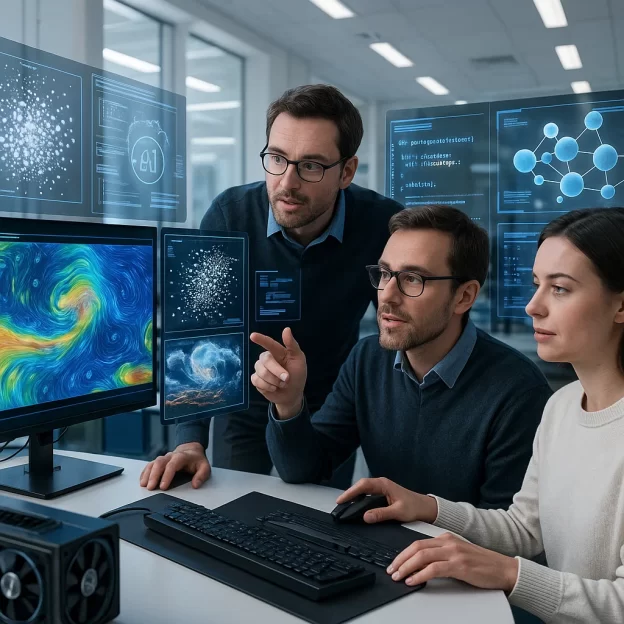AI for everyone represents a revolutionary shift in accessibility to sophisticated technology that was once reserved for specialists and large corporations. Modern artificial intelligence platforms democratize complex computational processes. This makes advanced simulation capabilities available to educators, researchers, and creative professionals regardless of their technical background. AI being accessible to everyone is focused on user-friendly interfaces, comprehensive documentation, and community support systems that enable widespread adoption.
These platforms integrate machine learning algorithms with intuitive design tools, allowing users to create sophisticated simulations without extensive programming knowledge. The accessibility of AI transforms how individuals and organizations approach complex problem-solving, visualization, and predictive modeling across diverse industries and academic disciplines.
Real-Time Rendering and Physics Simulation

Computer graphics technology has evolved dramatically to support real-time rendering of complex environments and physics-based simulations. Modern graphics processing units leverage parallel computing architectures. As a result, it becomes capable of calculating millions of interactions simultaneously, creating realistic visual representations of natural phenomena.
Advanced lighting models, particle systems, and fluid dynamics algorithms produce stunning visual effects that accurately represent physical behaviors.
Ray tracing technology simulates light behavior with unprecedented accuracy, creating photorealistic images and animations that blur the line between virtual and reality.
These rendering capabilities enable researchers to visualize complex data sets, test hypotheses, and communicate findings through compelling visual narratives.
Machine Learning Integration in Simulation Design
Artificial intelligence enhances simulation accuracy through predictive modeling and pattern recognition capabilities that traditional methods cannot achieve. Machine learning algorithms analyze vast datasets to identify various elements from:
- Trends
- Optimize parameters
- Predict outcomes
All these are done with remarkable precision. Neural networks trained on historical data can generate realistic scenarios, weather patterns, and behavioral models that improve simulation fidelity.
Deep learning techniques enable simulations to adapt dynamically to changing conditions, creating more responsive and realistic virtual environments. These AI-driven approaches reduce computational overhead while increasing simulation complexity and accuracy.
Applications Across Industries and Research
Advanced simulation technology finds applications in aerospace engineering, medical research, entertainment, and environmental modeling. Automotive manufacturers use computer graphics simulations to test vehicle designs under various conditions before physical prototyping.
Medical professionals employ simulation platforms to practice complex procedures, train students, and develop new treatment protocols. Climate researchers utilize advanced simulations to model global weather patterns, predict environmental changes, and assess the impact of human activities on ecosystems.